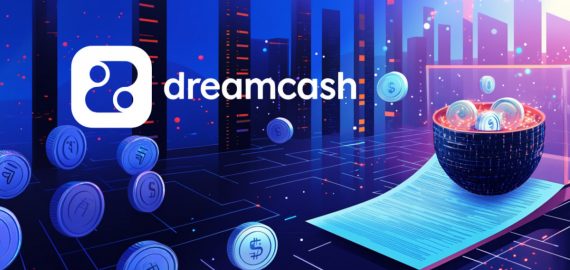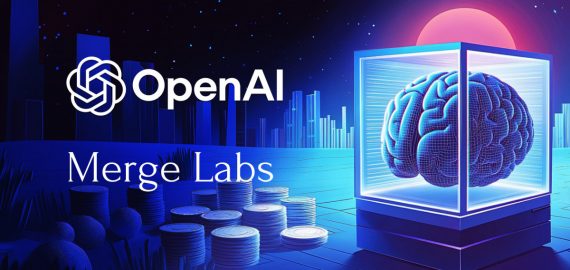Navigating the Wild West of Web3: Intellectual Property Protection, Community Building, and the Quest for Authenticity in the NFT Space


In Brief
Darran Garnham, CEO of Toikido, discusses Web3 and digital collectibles, blockchain’s impact, intellectual property protection, and NFT future.

In this interview, Darran Garnham, Founder and CEO of Toikido, shares his insights on the world of Web3 and digital collectibles. With over three years of experience in this space, Garnham discusses his journey from working with Gary Vaynerchuk on VeeFriends to launching his own project, Bad Eggs. He offers valuable perspectives on blockchain’s impact on the digital collectible market, intellectual property protection, and the future of NFTs.
Can you tell us about your journey to Web3? How did you start, and what was your first project?
I’ve been in Web3 for about three and a half years. I really got into it after meeting Gary Vaynerchuk, or Gary Vee, and working very closely with him on his project VeeFriends. Then, we worked with the guys at CoolCats and helped them bring the digital into the physical.
More recently, we launched our own project a month ago, but we’ve been building that project for two years. The timing was right with the way the market was for us to come into the space as ourselves with Bad Eggs but with a deep-rooted plan behind it.
How do you think the integration of blockchain has transformed the digital collectible market?
Blockchain has created almost a perfect storm. The people collecting digital assets are predominantly the same people who are collectors of other things, like trading cards, toys, or, at the upper end, cars. What blockchain has allowed us to do is fulfill ownership of digital collectibles without always having to have something physical.
In the last two years, the value of digital collectibles has increased, not only physically. You can now see rare trading cards, baseball cards, and football cards – the market has gone exponentially crazy in the last three to five years. There’s definitely a correlation between the two.
What measures are in place to protect intellectual property rights within the digital collectible space?
Not enough, but they’re improving. The platforms are getting better. We’ve seen it with our own collection. We launched on OpenSea and partnered with OpenSea Verify as a brand, as an IP, as an NFT. Immediately, lots of fakes came into the space, but we were able to shut them down quite quickly because we had the official verification.
It’s still about educating people, particularly those new to the space, that they need to be very careful, look for official products, official Discord channels, and talk to the community. Don’t rush in, because we all still make mistakes in this space. As a business coming into this space, we understand intellectual property, trademarking, classifications. We’re hopefully bringing that knowledge into the space as well.
Do you think it’s easier to attract new customers from the US or Europe? Are these two markets different?
The US is probably further ahead at the moment. Europe is very fragmented, and the adoption of new technology definitely differs by market. This has been no different from previous integrations of gaming or television.
Some more traditional markets like Italy or Spain might be slower adopters than some of the more progressive, younger, fast-moving markets. The leading areas now are really the US, Middle East, Dubai, and Hong Kong – they’re kind of setting the pace for the rest of the world at the moment.
What impact do you foresee artificial intelligence and machine learning having on the entertainment and NFT industries?
It’s going to have an impact. It’s allowed us to prototype, but there’s still no substitute for talent and story. Any chatbot or AI can do a job to a certain extent, but it will get better. As much as Hollywood or some of the big platforms are desperate for it not to happen in some ways, I think we need to embrace it like any new technology.
We’re using AI, but we’re not really using it to bring products to market. We’re using it for prototyping and seeing how something might work or look. Then we’re putting our own finish on things and making sure that the creativity is still unique and hasn’t been automatically generated somewhere.
How do you foresee regulatory changes affecting the digital collectibles and entertainment industry in the coming years?
I think regulation will slowly come. With anything new, big organizations and governments are almost playing catch-up. The challenge they have is that normally those organizations move phenomenally slowly, so the technology is always moving faster.
Regulation is always good in one respect, but if it slows things down, that can be a challenge. The bigger challenge is the global nature of blockchain and the flexibility of the space. I think regulation will slowly catch up, but honestly, I think it’ll always be behind in some way.
What key innovations and trends will be essential for the future growth of the digital collectibles market?
I think the digital market will continue to learn from physical collectibles of the past, whether that be high-end art or what’s worked for the last 30-40 years. There will be a deeper crossover between the two. The most popular physical collectibles globally haven’t really come into the digital space yet because they’re so successful physically.
We’re approaching it differently, believing that both can live together and endorse and lift each other. The innovations in that space will really be new platforms, new ways to use your collectibles in entertainment and gaming, and improved accessibility.
How will the NFT market evolve in the next few years? What are your plans for this period?
The market has done exactly what Gary, who’s an investor in our business, predicted. He said that 99% of projects from three years ago would probably disappear, and that’s probably not far from the truth. People who know how to build brands will be coming into this space more deeply. We’ve come into this space with Bad Eggs, with a deep roadmap.
Bad Eggs will go into games, animation, events, physical products, and theme parks. But we started with NFTs, and we’ve got a plan behind it. I think more people will come in with that approach. The community we have from Bad Eggs and the goodwill for other projects we’re doing are significantly more interesting in terms of how you can talk to your audience daily on Discord and get their feedback.
How do you see the state of blockchain in the next few years?
It will just become more and more endorsed, being used in everything we do. I gave a speech at my kid’s school a couple of weeks ago, and over 50% of the 14-15 year olds raised their hands when asked about blockchain.
I think blockchain will just become the norm for them as they look to do anything from applying for jobs to having jobs in the space, to buying cars, buying property. It’s going to integrate itself through everything.
What advice would you give to new collectors or developers?
Do your research, have a great community team. Always be available. Be very honest. Don’t over-promise and under-deliver. Look at the platform that you’re going to use. We used OpenSea to begin with, and we’re talking to Magic Eden about a project at the moment.
We went with Ethereum, and we’re looking at a project in Solana. So just research, research, research. Read, read, read. Talk to people who are in this industry. Get as much information as possible. Just keep learning. Every day is a chance to boost skills because the industry is moving so quickly.
Disclaimer
In line with the Trust Project guidelines, please note that the information provided on this page is not intended to be and should not be interpreted as legal, tax, investment, financial, or any other form of advice. It is important to only invest what you can afford to lose and to seek independent financial advice if you have any doubts. For further information, we suggest referring to the terms and conditions as well as the help and support pages provided by the issuer or advertiser. MetaversePost is committed to accurate, unbiased reporting, but market conditions are subject to change without notice.
About The Author
Victoria is a writer on a variety of technology topics including Web3.0, AI and cryptocurrencies. Her extensive experience allows her to write insightful articles for the wider audience.
More articles

Victoria is a writer on a variety of technology topics including Web3.0, AI and cryptocurrencies. Her extensive experience allows her to write insightful articles for the wider audience.


















































